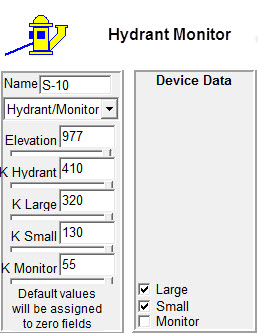| Fireflow and Hydrant Analysis determines the hydrant flow at a specified residual pressure and creates printable fire flow graphs and hydrant reports. |
| KYPipe allows fire flow calculations to be made at hydrants, junctions or both. Therefore it is not necessary to include hydrants in your model to calculate fire flows since junctions can be used instead. However, incorporating hydrants allows the user to plot hydrant test data and maintain accurate and detailed hydrant records in addition to calculating fire flows. Hydrant icons can be emphasized using NFPA hydrant color codes. While other hydraulic modeling software adds pipes to account for hydrants, KYPipe does not. |
The KYPipe engine can output data for a variety of situations, including:
The results are presented in a printable fire flow graph or in a detailed hydrant report. |
| Hydrant Flow-Pressure Data | Hydrant Information Maintained by the Model |
The hydrant flow results will appear next to each hydrant for which an analysis was conducted. |
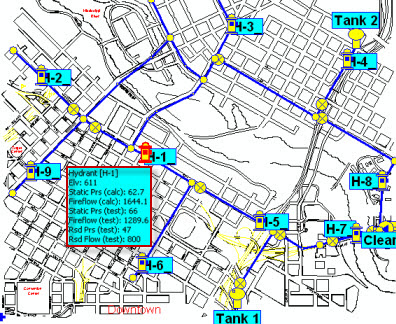 |
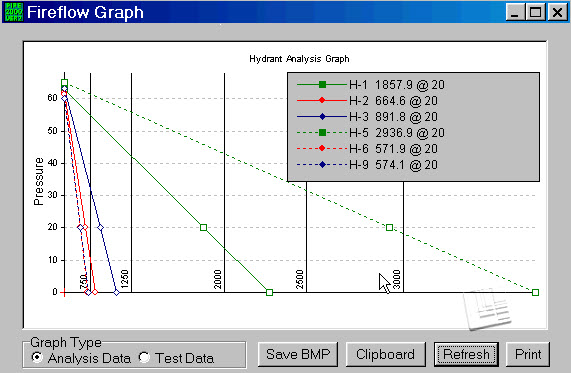 |
| Hydrant Test Graph Example |
AWWA and NFPA guidelines are used to compute the curve for available pressure as a function of flowrate using the hydrant test data as shown below. |
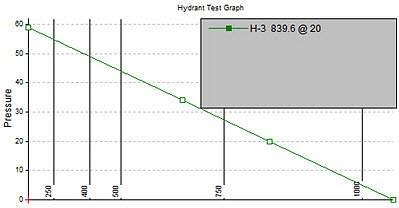 |
| Default Hydrant and Hose Constant / Suction Pressure at Fire Pump Calculation |
As stated, conventional fire flow analysis determines the flow that maintains the distribution system pressure at a user-specified amount, typically 20 psi. However, KYPipe also allows the user the option to determine the maximum flow which will maintain a user-specified suction pressure at the fire pump. This is necessary because in some large-capacity systems, conventional fire flow analysis may overestimate the possible fire flow, predicting fire flows too large to be delivered to the pumper at an acceptable suction pressure (e.g., > 0 psi) due to losses through the hydrant and hose. |
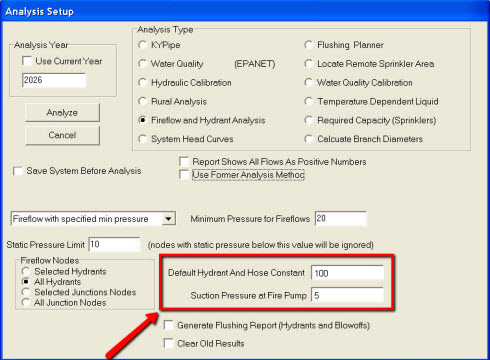 |
When values are entered in the fields highlighted in the above image, a second calculation is performed to determine the maximum flow that maintains an acceptable suction pressure at the fire pump. When this figure is lower than the amount determined by the conventional approach, then the conventional approach has overestimated the potential fire flow and the secondary calculation is more realistic. |
| Hydrant Monitor Element |
|
A Hydrant Monitor Element allows the monitor (nozzle) to operate while connecting a hose to one of the other connections. The Hydrant/Monitor may be analyzed with up to three valves open simultaneously. The K values for the Hydrant/Monitor may be set at each individual hydrant using the Node Information Data box. The open valves may by selected in the Device Data box as shown:
|
|
|


